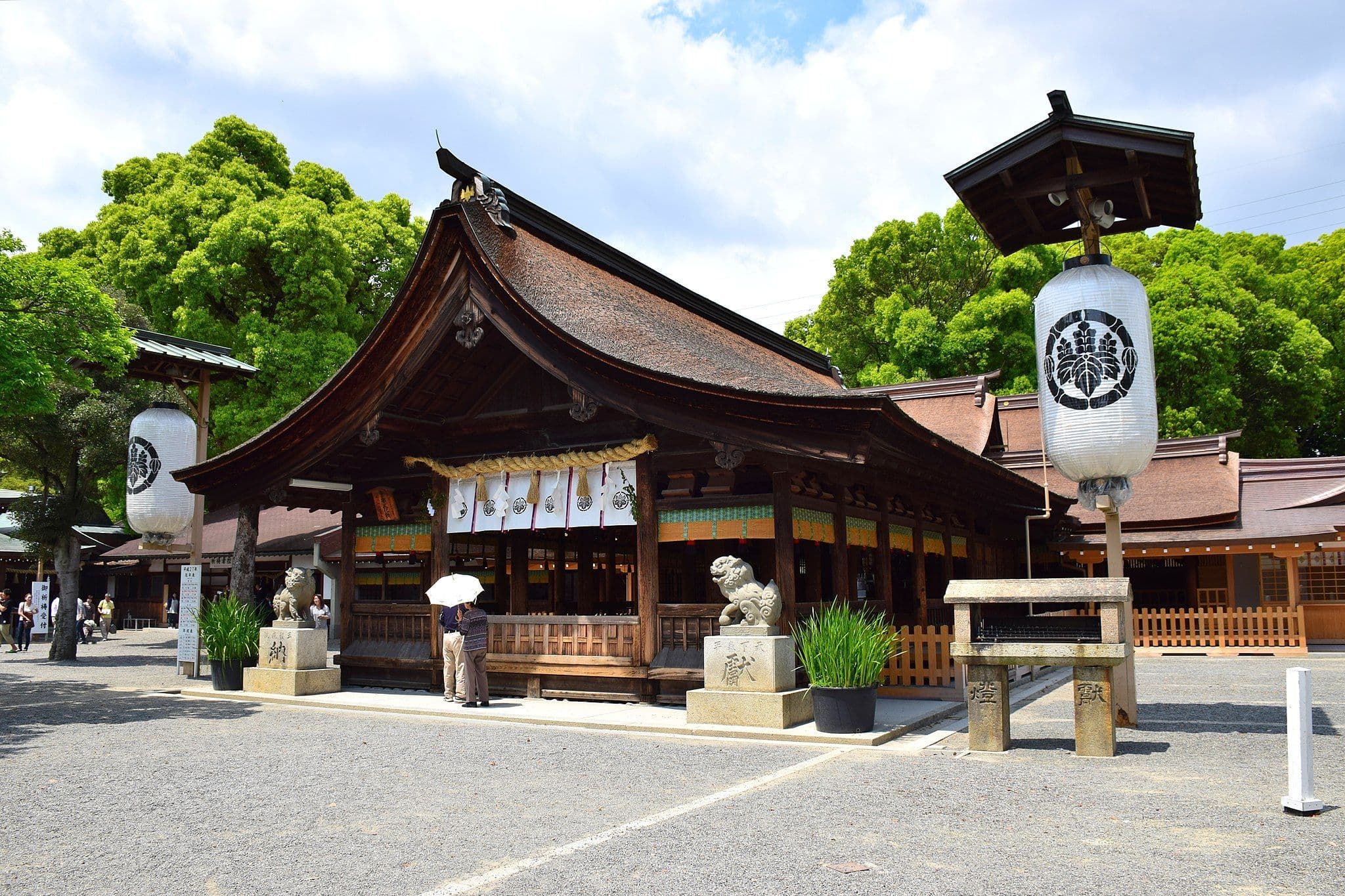
Owari Ōkunitama Shrine
尾張大国霊神社- Kōnomiya StationMeitetsu Nagoya Main Line
- Walk 4 minutes
Owari Ōkunitama Shrine, formally known as the Sōja ("centralised provincial shrine") of Owari Province, is a historically significant Shinto shrine located in Inazawa City. It enshrines Owari Ōkunitama no Kami, the tutelary land spirit (kunidama) of the Owari region. This deity embodies the sacred power of the land itself, honoured by the ancestors of the Owari people who settled and cultivated the area. The shrine has long been revered as the regional guardian, protector of agriculture and commerce, and a deity believed to ward off misfortune.
Established during the Nara period, the shrine was situated adjacent to the provincial government office (kokuga) and served as the official shrine of Owari Province. It became the site where the provincial governor conducted important rituals. This role led to its popular name, Kōnomiya (“shrine of the provincial capital”).
The shrine complex follows the traditional Owari-style layout, with the main sanctuary (honden) built in nagare-zukuri style and the worship hall (haiden) in kirizuma-zukuri. These, along with the connecting hall, ritual text hall, east and west corridors, and the tower gate (rōmon), are arranged in a linear configuration.
The worship hall, constructed in the early Tokugawa period (about 350 years ago), features rare parallel interior pillars and is designated an Important Cultural Property. The tower gate, dating to the early Ashikaga period (approximately 550 years ago), also holds cultural property status. During its major reconstruction in 1646, its upper structure was remodeled, resulting in a unique blend of architectural styles from two distinct historical periods.
Shrine Architecture and Layout
Adjacent to the main sanctuary stands an Iwakura, a ring of five large natural stones. This site represents a primitive form of worship predating shrine buildings, offering evidence that ritual practices at this location date back to ancient times.
There are two main auxiliary shrines (Individual Shrines) located separately within the precinct:
- Ōmitama Shrine enshrines the child of Ōtoshi no Kami. Located in the southwestern part of the grounds.
- Munakata Shrine enshrines Tagorihime no Mikoto. Located in the northeastern part of the grounds.
An additional six smaller auxiliary shrines (Six Auxiliary Shrines / 六末社) are located in a single area in the southeastern part of the shrine:
- Shigū Shrine enshrines Sarutahiko no Kami.
- Inari Shrine enshrines Ukanomitama no Mikoto.
- Sanjosha enshrines Tagorihime no Mikoto, Takitsuhime no Mikoto, and Ichikishimahime no Mikoto.
- Hakusan Shrine enshrines Kukurihime no Mikoto.
- Imori Shrine enshrines Susanoo no Mikoto.
- Shinmei Shrine enshrines Amaterasu Ōmikami.
Facilities and Cultural Assets
Additional facilities include the Sanshūjo (Worshippers’ Hall), completed in 1989 and renovated in 2009. It is used for wedding receptions and ceremonial events, offering both Western-style and traditional Japanese rooms. The grounds also feature historic teahouses and a garden, including Sanshōtei and Hanshōan, built in the sukiya-zukuri style. These structures overlook the serene gardens and host monthly tea gatherings open to the public.
The shrine preserves several sacred treasures designated as Inazawa City Cultural Properties, including:
- A large iron bell (Ōnarusuzu) used in the Naoi Shinji purification ritual, dating from the Nanboku-chō to Muromachi periods
- Ceramic komainu (guardian lion-dogs) from the Muromachi period
- A shishi-gashira (lion mask head) with a separately crafted jaw and lacquered gold finish, also from the Muromachi period
One of the most notable events held at the shrine is the Naoi Shinji, commonly known as the Hadaka Matsuri (“Naked Festival”), performed annually on the 13th day of the old lunar New Year. This ritual originated around 1200 years ago, during the reign of Empress Shōtoku, when prayers for the expulsion of plagues were conducted across Japan. The provincial governor of Owari also performed the rite at this shrine, which served as the Sōja of the province.
The Naoi-den, a sacred hall on the grounds, serves as the place where the Shin-otoko (“divine man”) purifies himself for three days and nights before the event, and where the ritual is performed on the day itself.
Upcoming Events
Related topics
At Hey Japan!, we strive to keep the places listed on our website as current as possible. However, it is important to note that location owners or management may make changes to their plans, including canceling events, altering opening times, or modifying admission requirements, without prior notice. To ensure that you have the most accurate information, we recommend checking official websites before visiting any location.
Last Updated:














